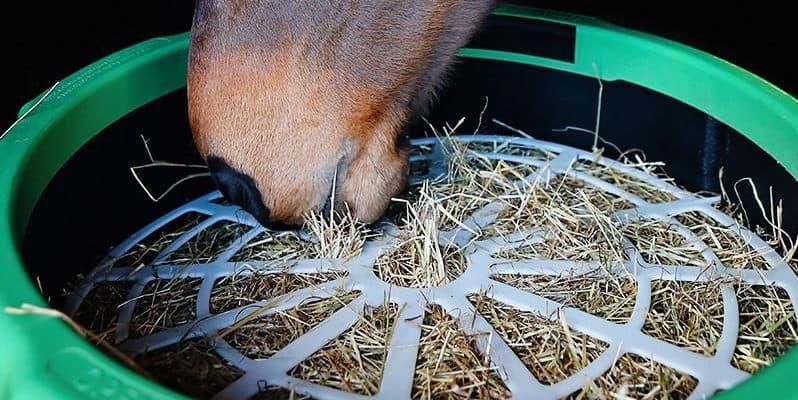How forage can prevent the prevalence of gastric ulcers

Did you know gastric ulcers affect 75% of competition horses? And it’s not just those competing at the top levels that suffer – many horses at amateur levels are diagnosed with this painful condition.
Lack of forage
Equine Gastric Ulcer Syndrome (EGUS) is where the stomach lining is exposed to acid produced by the stomach for prolonged periods. This causes erosion of the lining, which results is painful ulceration and bleeding.
So how can EGUS be avoided?
One of the contributing factors is a lack of forage in the diet. Unlike humans, horses produce gastric acid whether or not they are eating, so periods of fasting can cause excessive acid build-up.
Under normal situations where the horse has access to ad-lib forage or grass it’s manageable, as he will spend 16 hours a day grazing. However, stabled horses consume their ration very quickly. A horse only needs to go for four hours without eating before the acidity (pH) of the stomach gets notably worse.
Fibre mat
A horse’s stomach has two regions: the lower region is acid tolerant, whereas the upper, non-glandular part of the stomach is more sensitive. When the acid splashes into this upper half, ulceration and sometimes bleeding occurs. Ulcers can cause the horse a lot of pain, which affects their mood and performance.
Forage creates a fibre mat in the stomach, which prevents any acid splashing up into the unprotected non-glandular area. When working or competing, the horse is active for an extended duration of time, increasing the exposure of the stomach lining to the acid.
Acid buffer
Feeding long-stem forage (ie hay or pasture) also induces chewing and the production of saliva, which acts as a natural buffer to the acid.
The Haygain Forager slow feeder has been shown to double the time a horse spends eating his forage. It works by mimicking the grazing routine associated with a horse’s natural habitat, so there is always forage in the stomach. The Forager’s regulator grid ensures smaller bits of forage are eaten, causing an increase in chewing which helps maintain a flow of saliva – which protects the horse against uclers.
To find out more about the Haygain Forager visit haygain.co.uk/products/haygain–forager.






